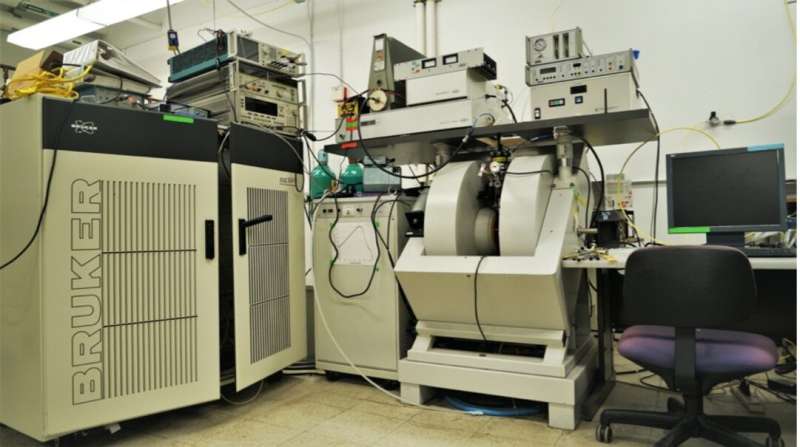How bacteria makes copper into an antibiotic

Copper in small quantities is an essential nutrient but can also be toxic. Human immune cells use copper to fight invading pathogens. Some microorganisms, in turn, have evolved ways to take up copper and incorporate it into biological molecules, either as a way to absorb copper for nutrition or to neutralize its toxic effects.
One of these organisms is the soil bacterium Pseudomonas aeruginosa, which can cause infections in hospital patients. A new study from researchers at the University of North Carolina Chapel Hill and UC Davis, published Nov. 19 in Science, shows how P. aeruginosa uses copper to make an antibiotic called fluopsin C.
"This finding helps us understand how this pathogenic bacterium resists copper and out competes our natural microbiota during infection and will drive the discovery of new treatments," said Bo Li, associate professor of chemistry at UNC and senior author on the paper.
Fluopsin C was discovered in 1970. It is a broad-spectrum antibiotic that kills a wide range of bacteria and fungi, including strains resistant to other drugs.
Electron paramagnetic resonance
Li's team at UNC followed the uptake of copper by cultured P. aeruginosa and showed that the copper atoms were incorporated into fluopsin C.
They worked with Lizhi Tao, postdoctoral fellow in Professor David Britt's lab at the UC Davis Department of Chemistry, using electron paramagnetic resonance, or EPR, to study the synthetic pathway. The researchers found that two small sulfur-containing molecules bind to each copper atom in a mix of cis and trans isomers.
The study shows how Fluopsin C could be synthesized by an enzymatic process instead of using hazardous chemicals. Repurposing copper into an antibiotic in this way is a different response from processes in most organisms, which either sequester or export the metal from the cell, Li said.
EPR is a form of magnetic resonance spectroscopy which is particularly suited to studying metals in organic molecules. Britt's lab at UC Davis operates the CalEPR center, with seven EPR instruments, the largest facility of its kind on the West coast.
More information: Jon B. Patteson et al, Biosynthesis of fluopsin C, a copper-containing antibiotic from Pseudomonas aeruginosa, Science (2021). DOI: 10.1126/science.abj6749
Journal information: Science
Provided by UC Davis



















